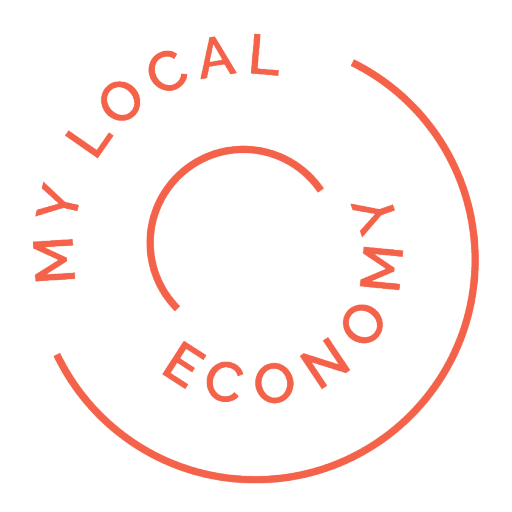Summary
Agile cities, regions and local economies: there are multiple challenges, pressures and opportunities facing cities, regions and local economies in the UK – from Covid-19 recovery to Brexit. Agility in policies, strategy, delivery and deployment of resources will be needed.
Youth unemployment, exclusion and inequality, business indebtedness and continued uncertainties over international trade and investment– are some of the main challenges. Various forecasters indicate a loss of between 1 to 2 million jobs between 2019 and 2021.
Covid has accelerated many trends and changes that were already occurring pre-pandemic. The restructuring of retail, transforming town and city centre roles, remote working and virtual meetings, the increasing digitalisation of business, markets, commerce and society – have all taken a big leap in the past 18 months.
Whilst between 1 and 2 million job losses have been forecast between 2019 and 2021, jobs creation is rebounding quickly, and the labour market is tightening due to the loss of 1.3 million foreign-born residents. Brexit is also causing significant supply chain disruption to the UK economy.
A “Green Recovery” package could help to accelerate economic recovery and deliver on climate change targets – but implementation of low carbon and sustainable solutions and structural change is slow.
Policy and institutional change for local economies is going to happen in Autumn. It is unlikely to depart radically from competitive grant funding and a few new areas given modest devolution powers and funding.
Taking stock and reflecting on the past 12 months
Its not often I get to pause and reflect on the work I’ve been doing over recent months. Its usually hopping from one express train to the next. But I recently had to gather my thoughts on the impacts of Covid-19 and Brexit on local economies in the UK, and this provided a good opportunity to upcycle this work into a Linkedin article.
UK economic performance, prospects and long-term challenges
The impact of the Covid-19 pandemic
As we come out of the third national lockdown for England, the immediate and long-term impacts of Covid-19 are significant, and could be far reaching for certain industries and communities. Patterns of investment, employment and how and where people work may change in the future. The main highlights, in terms of the UK economy, are as follows:
Significant fall in GDP:UK gross domestic product (GDP) is estimated to have decreased by 1.6% in Quarter 1 (Jan to Mar) 2021, revised from the first estimate of a 1.5% decline. The level of GDP in Quarter 1 2021 is now 8.8% below where it was pre-pandemic at Quarter 4 (Oct to Dec) 2019.
Claimant unemployment peaked at 2.678 million(6.4% of the working-age population) in February 2021, increasing from 1.256 million (3.0%) in February 2020. Claimant unemployment now stands at 2.268 million (5.4%) in July 2021.
Youth unemploymentis a particular concern, especially for school leavers transitioning to entry-level jobs and Apprenticeships, where the number of openings has fallen.
Furloughs peaked at 8.9 millionemployments in May 2020 – representing one-quarter of all workforce jobs. Furlough and relief schemes have prevented much higher rates of job loss and unemployment.
Covid-19 has amplified existing inequalitiesin communities, and the impacts have been uneven both spatially and according to income group, age, ethnicity and gender.
In particular, retail, hospitality, and the visitor economy industries– have been severely affected. Office-based activities that provide jobs and footfall for urban areas have also been curtailed, with many people working from home.
Spatial unevenness of Covid impacts. Covid has impacted large city centres more than smaller town centres, as the former have had significant temporary closure of retail, leisure and office/ employment premises. Whereas smaller towns have mostly enjoyed buoyant spending and footfall as residents were forced to shop and consume locally during the pandemic.
Covid has had a huge impact on UK businesses.The October 2020 Bank of England DMP survey estimated that sales were still 17% lower than they otherwise would have been in 2020 Q3, while employment was 8% lower and investment 24% lower.
TheCityUK suggest that, by the end of March 2021, £35bn of unsustainable debt will be owed by UK businesses from government loan schemes; and £100bn of total unsustainable debt will be owed by UK businesses.
Businesses face a future debt challenges.As of June 2021, businesses owed local councils almost £2.5bn in unpaid business rates. Insolvency practitioners Begbies Traynor also provided analysis that shows a record 527,000 businesses are in significant financial distress. In “Supporting Economic Recovery – Recapitalising Businesses post COVID-19”, a detailed report on this issue, banking lobby group TheCityUK suggest that, by the end of March 2021, £35bn of unsustainable debt will be owed by UK businesses from government loan schemes; and £100bn of total unsustainable debt will be owed by UK businesses.
Covid has accelerated many trends and changes that were already occurringpre-pandemic. The restructuring of retail, transforming town and city centre roles, remote working and virtual meetings, the increasing digitalisation of business, markets, commerce and society – have all taken a big leap in the past 18 months.
Economic outlook for the UK
UK job losses between 2019 to 2021 could number one or two million – but there are signs that employment is recovering swiftly.Forecasts produced by Cambridge Econometrics suggest that there will be a loss of one million jobs in the UK between 2019 and 2021 – and the Office for Budget Responsibility (the UK governments official forecasts) forecast a loss of two million jobs.
Sharp rebound in recruitment exposes labour shortages caused by Brexit.Although there are job losses predicted, recruitment has rebounded strongly over summer. The number of job vacancies in the UK rose above 1m for the first time on record in the three months to August. Data from HM Revenue & Customs showed that jobs growth continued in August, with payroll employment up by 241,000. Almost 1.4m workers were now in temporary jobs — a five-year high. In January 2021, and Economic Statistics Centre of Excellence report estimated that almost 1.3 million people born abroad had left the UK over the preceding 12 months.
The true impact of Covid-19 will not be known until the vaccination programme nears completion, and the furlough scheme ends in September. The sectors most at risk of jobs loss have tended to disproportionately affect lower-paid residents, younger people, women and workers from BAME groups.
If this recession is like previous ones, recovery will take between five and 10 years.When we compare the current crisis to previous recessions, during the 1980s recession (March 1980 until March 1983) there was a loss of 2 million jobs (7.3 per cent), compared to a loss of 2 million jobs (6.7 per cent) in the 1990s recession, and a loss of 880,000 (2.7 per cent) in the 2009 recession. In past recessions, unemployment has tended to take up to four years from the onset of recession to reach its peak. It took six years to recover lost employment from the 1980s recession; and nine years to recover employment lost in the 1990s recession. Even though the 2009 recession had a relatively smaller impact on jobs, it still took five years to recover the lost jobs.
Cambridge Econometrics forecasts shows that the distribution of impacts will be sectorally uneven, with five sectors accounting for almost two-thirds of the loss in GVA: accommodation and food; manufacturing; education; transport and storage; and construction. Knowledge intensive business services (KIBS) are expected to see a smaller proportionate drop, while GVA in some essential sectors (health and social work) are projected to increase.
The impact of Brexit
The Brexit deal agreed in December 2020 has several implications in terms of trade, customs and supply chains. There is current evidence of disruption to trade, supply chains, labour and skills supply. The main features and implications of the deal are summarised briefly below.
Trade in Goods.British exporters face regulatory hurdles that will make it more costly and burdensome to do business in Europe, including rules of origin certification.
Financial Services.The deal offers little clarity for financial firms. The likelihood on so-called equivalence, which would allow firms to sell their services into the single market from the City of London – is becoming more and more remote.
Level Playing Field.Both the EU and UK committed to upholding their environmental, social, labour and tax transparency standards to make sure they don’t undercut each other.
Customs.The UK has left the Customs Union. In practice, over the last 9 months this has proved to be particularly burdensome for businesses in several respects – the new processes and paperwork require to clear customs and delays associated with this, the end of groupage clearance (every item must be certificated); the imposition of additional transport and processing fees; and the requirement for EU purchasers to pay UK VAT in advance directly to HMRC.
Haulage.The is the supply of HGV and delivery services and drivers to transport goods within the UK and between the EU and UK has been a major problem since January 2021.
No resolution for industry-specific recognition and legal standards:There are only temporary agreements in place which cover Aviation, access to the EU’s internal energy market, and Data Flows.
Professional Services.No automatic mutual recognition of professional qualifications.
Business Travel.The U.K. and EU agreed that short-term business visitors won’t need to hold work permits or undergo economic needs tests.
Agriculture.Trade of farm goods will benefit from the zero-tariff, zero-quota terms between the two sides. U.K. agri-food consignments will have to have health certificates and undergo sanitary and phyto-sanitary controls at member states’ border inspection posts. Food and agri-products entering Northern Ireland from Great Britain will be subject to checks and phyto-sanitary controls.
The OBR has predicted that the economy will suffer a 4% drop in output over the long-term from Brexit, even if the UK and EU sign a free trade deal. As well as the need for recovery policies and programmes to build back the economy and jobs lost, there will be pressures on the public finances due to reduced tax revenues and increased expenditure as a result of the pandemic.
Achieving climate change goals
The ‘Green Recovery’is a popular term for a potential package of environmental, regulatory and fiscal reforms to be used in the recovery from the economic shock of the pandemic, and has been gaining increased international momentum; for instance, the United States ‘Plan for Climate Change and Environmental Justice’, the European Commission’s ‘European Green Deal’, and the UK’s ‘Ten Point Plan for a Green Industrial Revolution’ have recently been published or progressed to a reasonably advanced stage.
Macroeconomic analysis by CE has found a ‘Green Recovery’ stimulus package could not only help the economy recover but also set the UK on a low-carbon trajectory more aligned with ambitions to become a net-zero economy by 2050. The implementation of ‘Green Recovery’ investments could boost income, employment and GDP in the UK more than ‘return-to-normal’ stimulus measures (e.g. a VAT cut), with the added benefit of reducing emissions along a 2050 net-zero trajectory. The investments used in the analysis include public investment in energy efficiency; subsidies for wind and solar power; public investment in upgrading electricity grids; car scrappage schemes; and tree planting programmes.
Covid and Brexit have combined to bring supply chain disruptions and shortages, as well as recruitment difficulties
It is now clear that Covid and Brexit (and the debate rages on about the relative contribution to each) have led to some serious supply chain disruptions and shortages in the UK economy.The CBI’s own research has concluded that stock levels in relation to expected sales fell to their lowest level in August since it began tracking retail industry trends almost four decades ago. The CBI blamed global supply chain disruption triggered by the pandemic and worker shortages in several key industrial sectors, compounded by Brexit disruption as the UK emerges from lockdown. Supply chain issues are now affecting food retail, food processing, construction and manufacturing industries. In addition – recruitment difficulties have been reported for hospitality, construction and manufacturing industries, particular in relation to the lack of EU workers to make up for shortfalls in the UK workforce’s availability and skills.
Policy and institutional change
Its no great secret that changes to the institutional and funding framework for England are going to be announced this Autumn as part of the Comprehensive Spending Review. There are rumours of Local Enterprise Partnerships focusing on enterprise and innovation, and local authorities leading on accessing Levelling Up Funds and Shared Prosperity Funding. I don’t expect a radical change from the competitive grants formula of government and a few small new devolution deals – but we might see some sensible choices, such as programme or single-pot style funding. Whatever the outcome, the strategy has got to be one of again, being agile to fund priorities which lend themselves to the new arrangements. Of course, this will probably kick the can of devolution and genuine local fundraising powers down the road yet again – don’t expect a big devolution settlement any time soon.
Implications for local economies
The current economic outlook for the UK brings a number of significant challenges and uncertainties
Risk, uncertainty and labour and material shortages will be important factors in business investment and location decisions going forward.
Additional costs for businesses: almost certainly, the operating environment will become more challenging due to business indebtedness, the changes to overseas market access and exporting and custom rules, and the need to adjust salaries to retain and attract labour.
Additional tax burden on workers and businesses, as tax rates rise to cover the additional costs the Covid crisis has brought to the NHS, the Adult Care System, and UK government.
Real estate market uncertainties. There is general uncertainty about the level of activity amongst office workers, consumers, and tourists/visitors, and what the post-covid future looks like. There have been a number of retail closures during the pandemic, and many retailers have tried to renegotiate rents and lease terms. This has resulted in significant uncertainty in specific retail markets, although prime location and property investments and builds seem to have continued during the pandemic.
Supply chain and labour uncertainties. securing access to supply chain and labour needs will be major factors for investment and locational decisions in the next few years. For some firms, remote and agile working will be a useful option to address the labour attraction and retention challenges, and for others this will be less suitable.
Industry and market restructuring. There are a range of major changes brought about by Covid, Brexit, and major trends if technology and market structures – and there will be further changes ahead. This can be a challenge for local economies, in terms of understanding what businesses and markets want from the local area, and what local policy makers need to prioritise.
Agricultural land use is also subject to uncertainty with the transition to new Agricultural support policies, export and customs controls on agricultural produce and livestock, and labour shortages.
Business continuity may be affected; business acquisition or market entry may be enabled. For an existing business that has experienced significant Covid impacts, and is indebted, perhaps unsustainably – further market events or disadvantages, such as a rise in costs, or decline in a market segment – may be fatal, or may weaken the business’s financial position and make it vulnerable to acquisition. New businesses entering a market, or existing businesses diversifying into a new market – may find this more advantageous if they do not face the challenges, particularly indebtedness, or existing incumbents. In particular, existing UK and overseas businesses or investors with favourable finances may seek to increase their market share through strategic acquisitions. This may bring investment and jobs, and it may also bring relocations and closures.
The carbon challenge presents some critical changes to markets, businesses and consumers. How we produce goods and services, transport them and consumer them will have to change significantly – whether this is through renewable energy, circular economies, electric vehicles, or recycling. In 30 years, markets and businesses will not be operating on the same basis as today and there is a need to start planning and implementing this change now.
Real estate investors are likely to pile into prime markets, with high demand and more secure rental incomes; but shy away from more risky investments. Institutional finance may be more difficult and expensive to secure. Where industrial or office properties are in high demand, and command sufficient rental values, we are likely to see continued investment and growth. Similarly, for successful residential rental and sales, permitted development conversions are likely to continue. Conversely, property markets that are in decline, or are uncertain – they are unlikely to see much investor interest, unless valuations are corrected for the new market environment, and new uses can be found for premises and land. Another uncertainty is the availability of investment finance, the costs, and returns that must be made. Data on property market investments from real estate databases such as CoStar suggest that overseas institutional investment into UK office and industrial property had virtually halted in 2019, and was being replaced by local authority investment.
International markets and investment remain uncertain in terms of the UK’s settled position, advantages and strengths, post-covid and post-Brexit.
Re-thinking location factors, strengths and weaknesses in the current and changing market and economic environment is going to be critical.
Dealing with new policy and funding arrangements. There are likely to be new funding pots, new requirements, and the recasting and revision of local economic strategies. Green Book style funding bids and arrangements are likely to continue. A number of local authorities are preparing for competitive funding pots by developing strategic investment frameworks with prioritised projects – presumably to start the project concept and development process to feed into competitive funding rounds.
How should cities, regions and local economies respond?
Monitor, analyse – and discuss the changing economic landscape. The economic landscape and prospects are changing, and hard to predict. Being able to keep on top of changes in the national and local economy, and the ability to discuss them openly with stakeholders will lead to better understanding and decision-making.
Agility. The future is uncertain – and how the UK government will respond, is also fast changing and unpredictable. Being able to respond quickly and effectively to new challenges and opportunities is vital.
Advocacy and lobbying. Don’t expect the national government or other parties to analyse the implications of Covid-19 and Brexit for your city, region or local economy. This is up to you – to remain informed, and to raise awareness amongst national government leaders and stakeholders.
International outlook. There is a danger that the UK becomes too inward focusing. Whereas, significant sources of wealth generation, such as internationally tradeable industries – rely on an open, outward looking approach that values international collaboration and communities. International market access, exporting and investment require us to support international cooperation and cross-border relationships.
Inclusion and equality of access to opportunity. We must also acknowledge the serious inequalities in UK society, between places, communities and people – which have been amplified by the Covid-19 pandemic. We must make progress on these in every aspect of economic development.
Leadership. The challenges are significant and multiple – the leadership pressures are immense. But leadership is vital to steer a course to protect and sustain local economies and communities.
Climate change and sustainability should frame every response. Climate change legislation, targets, and the changes needed are unavoidable and there is a need to have a planned transition with tangible delivery starting now.
Responding to the challenges
Labour and skills shortages: The labour shortages due to EU exit are not going to be resolved in the short- or medium-term without a major turnaround in education and training policy, or even a change in immigration policy and practice. Businesses need to be assisted to adapt, through new HR practices, automation and capital investment, and new business models including the use of digitalisation and apps.
There will be a need to provide flexible support for those made unemployed during the pandemic or after furlough ends. With the right support, many of these workers could access and sustain jobs where there are labour shortages. Once furlough ends, and the economy begins further recovery in Autumn there is perhaps a need to rapidly assess how to improve labour market participation and reduce the risk of long-term unemployment.
There is an opportunity to improve HR and recruitment practices. Support for businesses and employers with HR advice and systems will help them to better understand and manage their skills and recruitment needs.
Business continuity and resurgence in sectors such as hospitality and tourism are vital, as they are a significant sector and employer for the local area and also help to sustain urban centres and rural and coastal areas. This should be a continued focus.
Indebtedness is a major challenge for SMEs nationally. Tailored support is needed, as well as realistic options for managing debt or business closure.
Town centres. We need to be prepared for high street floorspace to contract by up to 30%. This is the figure that national bodies have estimated that is excess retail floorspace in the UK, not needed in the future. Residents, businesses and visitors will continue to be attracted to quality environments and locations – in terms of natural capital, environment, culture, leisure, business clusters, and transport ease and accessibility. Town centres will have to compete as quality destinations. Leaders, organisations, and town centres will have to remain agile in terms of responding to the new economic environment as it becomes clearer what kinds of activities and demands are relevant to the town centre. A toolkit of approaches, initiatives and support – that can be flexed as needed – would seem a sensible approach




